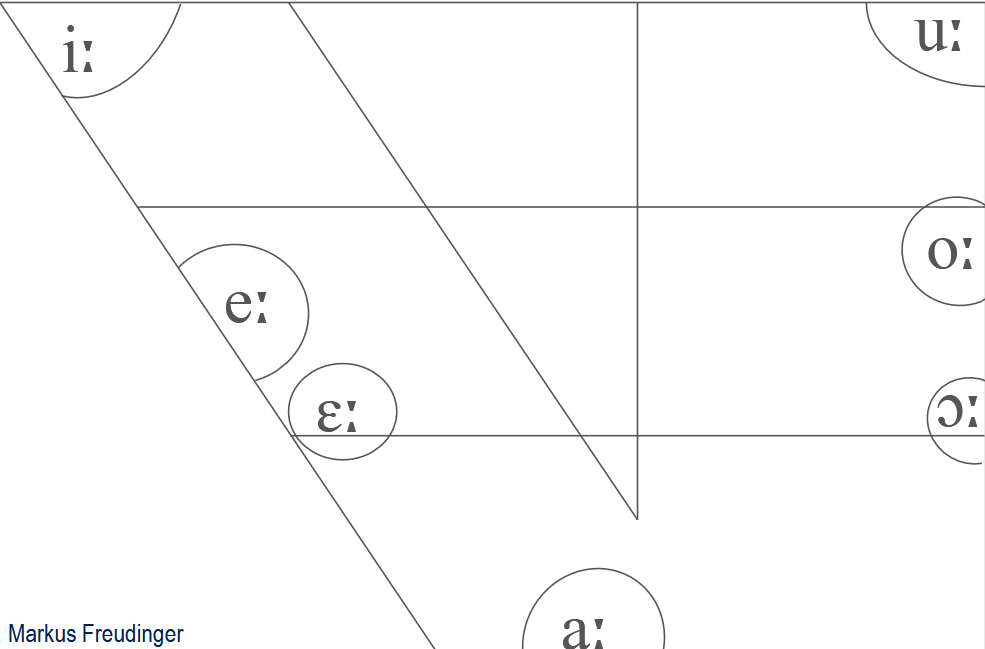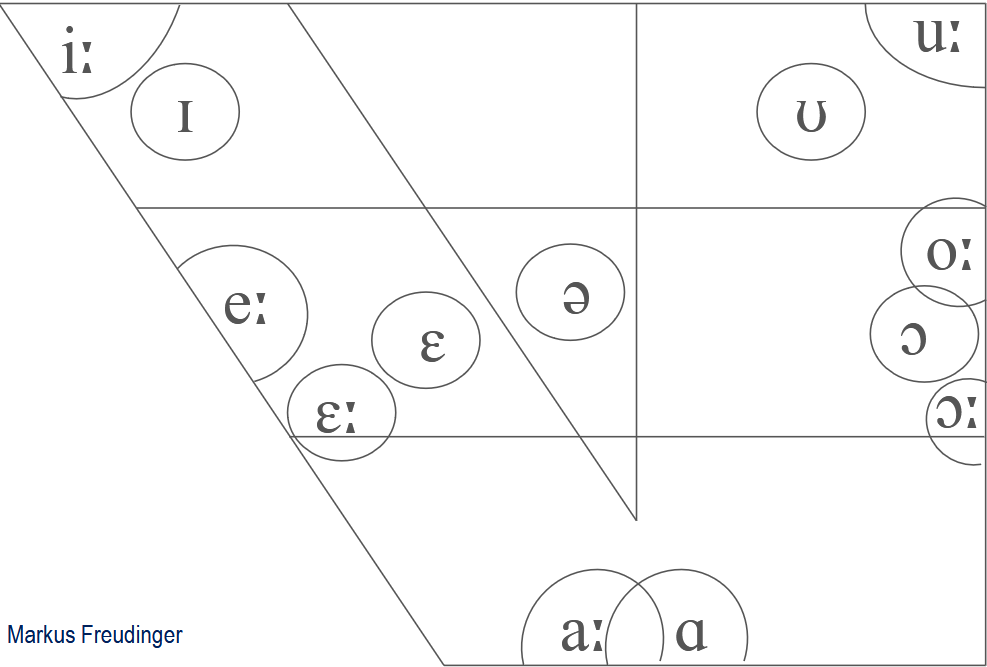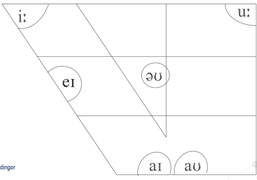Early Modern English Phonology
1/16
There's no tags or description
Looks like no tags are added yet.
Name | Mastery | Learn | Test | Matching | Spaced |
|---|
No study sessions yet.
17 Terms
Phonology in Early Modern English
• Massive changes concerning vowels
• Minor changes concerning consonants
• Growing discrepancy between spelling and pronunciation
Great Vowel Shift
Great Vowel Shift affects
• all seven vowels changed their quality
• at every point in the development of the GVS a distinction between the
vowels existed
A very general description of the Great Vowel Shift:
• long vowels were raised
• this means that the vowels moved from the open area to the close area
of the vowel chart
• closed vowels became diphthongs
Middle English long Vowels

Middle English Vowels

1st phase:
From 1400 – 1550
/i:/ → /əɪ/
/u/ → /əʊ/
/e:/ → /i:/
/o:/→ /u:/
/ɛ:/ → /e:/
/ɔ:/ → /o:/
/a:/ → /æ:/ → /ɛ:/
2nd phase
1550-1700
/əɪ/ → /aɪ/
/əʊ/ → /aʊ/
/e:/ → /i:/
/ɛ:/ → /e:/ from ME /a:/
3rd phase
1700-1800
/e:/ → /eɪ/
/o:/ → /əʊ/
from 1800 onwards

language-external reason
Sociolinguistics: Middle and upper class wanted to distance themselves from the lower class by using a distinct pronunciation
Language-internal Reasons
• If vowel quality of one vowel changes, this has effects on neighbouring vowels
• Hypothesis:
• /e:/ and /o:/ pushed to the close area
• close vowels /i:/ and /u:/ were pushed away: Push-chain Reaction
• empty slot was occupied by /e:/ and /o:/: Drag-Chain reaction
strut vowel
• 17th century: STRUT/but vowel (/ʌ/) developed
• Split: one phoneme /ʊ/ splits into two phonemes /ʊ/ & /ʌ/
• ModE examples: cut (but butcher); blood (but book)
• Why same spelling (<u>, <oo>) but different pronunciation?
• Two sources for /ʌ/
ME /o:/; spelt frequently with <oo>
In GVS /o:/ is raised to /u:/
• /u:/ is sometimes shortened to /ʊ/
• Two time slots for the shortening:
• Early shortening: /ʊ/ was lowered to /ʌ/
• Late shortening: /ʊ/ did not change
• This explains today‘s discrepancies:
/ʌ/: blood, flood
/ʊ/: book, good, foot, look
Pronunciation of fast in BrE and AmE?
• Middle English /a/ became /æ/
• Examples: hat, cat, fat
• 18th century: /æ/ became /ɑː/ in certain environments AND only in British English
• /æ/ in front of voiceless fricatives:
• Example: fast, path, staff, class, half
• American English kept pronunciation with /æ/
Consonants no longer pronounced
• voiceless palatal fricative /ç/: bright or sigh
• voiceless velar fricative /x/: taught or bough
• word-final /b/ and /g/: thumb, long
• /k/ and /g/ before /n/: knee or gnaw
• Lateral /l/ in some words: talk or half
• /w/ in some words: sword, answer, write
consonants pronounced differently
Voiceless velar fricative /x/ - /f/: enough or laugh
Vocalisation of /r/ after vowels and word-finally
• BrE: herb, birth, fur, here, there, poor
/ŋ/
already existed in Middle English
• was only an allophone: [ŋ]
• in EModE word-final /g/ was lost
• /ŋ/ reaches phoneme status; distinguishes meaning
![<p>already existed in Middle English</p><p>• was only an allophone: [ŋ]</p><p>• in EModE word-final /g/ was lost</p><p>• /ŋ/ reaches phoneme status; distinguishes meaning</p>](https://knowt-user-attachments.s3.amazonaws.com/267384e8-ec30-4aa6-bd25-acbe0047de4f.png)
/ʒ/
developed from /z/ + /j/ or /ɪ/
• Cluster /zj/ or /zɪ/ became palatised in the 17th century
• Result: new phoneme /ʒ/: Coalescence
• Occurrences:
• French loan words: rouge, prestige
• in cluster /zj/ or /zɪ/: measure, usual, occasion
• Process is still active today:
• ModE: different pronunciations for azure
/ˈæzjʊə ˈæʒə ˈeɪʒə/ → development of /zj/ to /ʒ/